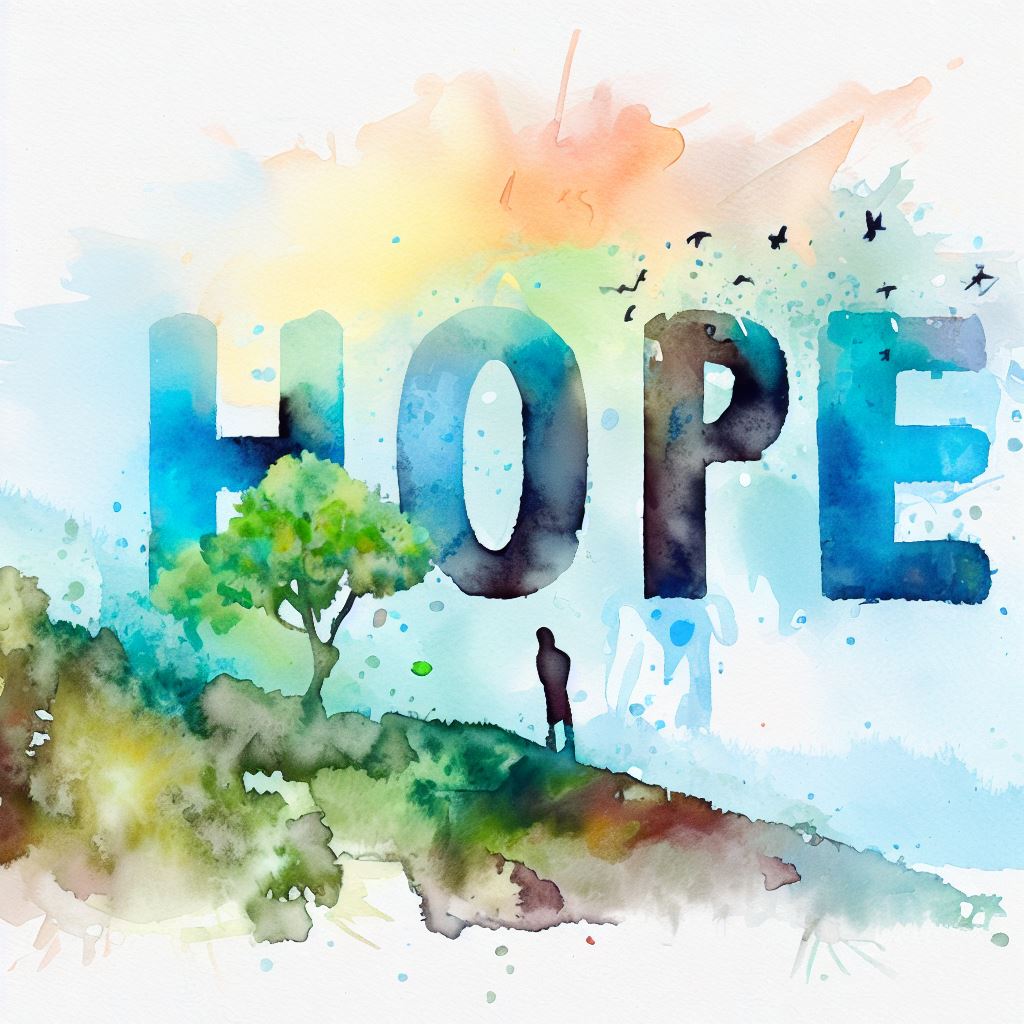Contents
Hope: Humanity’s Timeless Beacon
Hope, by definition, is an optimistic state of mind rooted in the expectation of positive outcomes in one’s life or the world at large. It is not merely a fleeting emotion, but a profound belief that drives actions and decisions, anchoring us during tumultuous times. Across epochs and cultures, hope has emerged as an intrinsic component of the human psyche. It is an emotion that has kindled revolutions, inspired groundbreaking discoveries, and provided solace during periods of profound personal and collective adversity.
The tapestry of human history is rich with tales of hope. From ancient civilizations who placed their hope in the benevolence of deities, to modern-day movements fighting for justice and equality, hope has consistently played a pivotal role. It has acted as a light in the darkness, motivating individuals to persevere, dream, and aspire, even when faced with seemingly insurmountable obstacles. The sheer ubiquity and enduring nature of hope across ages underscore its profound significance in shaping the human experience.

The Psychological Fabric of Hope
At its core, hope is more than just a sentiment; it’s a complex cognitive process that intertwines our emotions, beliefs, and motivations. From a psychological standpoint, hope isn’t merely a passive wish but an active orientation towards the future. It’s a dynamic force that compels individuals to envision a better tomorrow and act in ways that make such a vision achievable.
Numerous studies have illustrated the myriad benefits of hope on mental health and overall well-being. Hopeful individuals often exhibit reduced symptoms of anxiety, depression, and stress. This is because hope acts as a buffer, allowing individuals to face adversities with a belief that they can navigate through them. The mere act of holding onto hope can be a source of comfort, providing a psychological anchor that grounds one’s emotions and perspectives, ensuring they aren’t easily swayed by external factors.
Furthermore, resilience—the ability to bounce back from setbacks and adapt in the face of adversity—is deeply intertwined with hope. Resilient individuals don’t just endure challenges; they harness them as opportunities for growth. And central to this adaptive capacity is hope. It instills a sense of purpose, helping individuals move forward, learn from their experiences, and adapt to new realities. In essence, hope and resilience form a symbiotic relationship, with each reinforcing the other, creating a formidable psychological toolkit that aids individuals in navigating life’s complexities.
Hope’s Neurochemical Underpinnings
The ethereal concept of hope, often seen through a philosophical or emotional lens, is deeply rooted in the intricate workings of our brain’s chemistry. As recent research has delved into the neuroscientific aspects of emotions, hope emerges not merely as an abstract feeling but as a result of tangible chemical processes within the brain.
Central to this biochemical dance are endorphins—neuropeptides that play a pivotal role in pain mitigation and pleasure promotion. They are often termed the body’s ‘natural painkillers.’ When an individual experiences hope, the brain witnesses a surge in endorphin levels, leading to feelings of euphoria and general well-being. But the play isn’t limited to endorphins alone. Other chemicals like dopamine, often associated with reward and pleasure, and serotonin, linked with mood regulation, contribute to the positive feelings associated with hope. The elevation of these chemicals not only reinforces hopeful sentiments but also counters feelings of despair and anxiety. In essence, the neurochemical foundations of hope provide a fascinating insight, affirming that this ancient emotion is both a psychological construct and a physiological phenomenon.
Hope’s Healing Touch on Physical Well-being
While hope is frequently associated with emotional and psychological well-being, its profound effects on physical health cannot be overlooked. Multiple research endeavors have delved into the connection between hope and health, revealing encouraging findings. Studies have consistently shown that individuals with higher levels of hope often experience faster recovery rates post illnesses or surgeries. This isn’t just a coincidental observation; the positive mindset associated with hope can actively bolster the immune system, accelerating the body’s natural healing process.
Furthermore, when it comes to chronic illnesses and pain management, hope plays an instrumental role. Living with persistent health issues can be mentally taxing, leading to feelings of despair and hopelessness. However, holding onto hope can transform this narrative. Patients who maintain a hopeful outlook are often better at adhering to treatment regimens, demonstrating higher pain tolerance and exhibiting a more positive response to therapies. The belief that better days lie ahead, that pain can be managed, and that health can improve, works as a powerful adjunct to medical interventions. In the intricate dance between mind and body, hope emerges as a vital partner, influencing and elevating our physical health outcomes.
Nurturing the Seeds of Hope
The nature of hope has long been a subject of contemplation. While many believe that hope is an innate trait, emerging naturally within individuals, contemporary thought suggests that hope can also be cultivated and nurtured. Just like a muscle that strengthens with exercise, our capacity for hope can be amplified through consistent practice and intentional efforts.
To foster hope, several techniques and practices have been highlighted by psychologists and experts. Mindfulness and meditation, for instance, anchors individuals in the present moment, allowing them to acknowledge current challenges while maintaining an optimistic vision for the future. By staying present and truly experiencing the now, one can find glimmers of hope even in everyday occurrences. Additionally, positive affirmations serve as powerful tools to nurture hope. Repeating affirming and hopeful statements can rewire our brain, instilling a more positive and hopeful outlook towards life. Another practice is journaling, where individuals pen down their aspirations and visions for the future, thus solidifying their hope in tangible words. Through these practices, and many more, hope can be intentionally cultivated, ensuring that it remains a guiding light even in the face of adversity.
Hope as the Cornerstone of Societal Evolution
Throughout history, hope has played an intrinsic role in shaping societies and driving cultural movements. It’s often been the unseen force behind significant societal progress, igniting the flames of change and propelling communities towards better futures. Movements rooted in hope have led to revolutionary shifts, be it the pursuit of civil rights, gender equality, or even environmental conservation. Hope becomes the glue that binds individuals together, creating a collective vision and a unified stride towards transformative change.
This collective dimension of hope, where entire communities rally around shared aspirations, significantly impacts resilience. When adversities strike, it’s the collective hope that acts as a buffer, ensuring that societies don’t crumble under pressure. Instead, they harness these challenges as catalysts for growth and innovation. Collective hope infuses communities with a shared sense of purpose, enabling them to weather storms together, turning individual vulnerabilities into communal strengths. It’s this interconnectedness, where personal hopes merge into a societal fabric, that has time and again demonstrated the profound power of collective optimism. In essence, hope, both personal and collective, remains an enduring force, continually shaping society and culture, pushing humanity ever forward.
Hope Amidst the Tempests of Modernity
In today’s rapidly evolving world, hope, as radiant and steadfast as it might be, faces its fair share of challenges. Global crises, from environmental catastrophes to economic recessions, have clouded collective visions of a brighter tomorrow. These vast, overarching dilemmas, coupled with personal adversities—be it job losses, health concerns, or broken relationships—can sometimes overshadow the light of hope, casting shadows of despair and cynicism.
This tug-of-war between hope and despair is further accentuated in the digital age. While technology connects us, making the world feel like a global village, it also bombards us with a continuous stream of information. Often, this influx consists of negative news, leading to what many term as ‘doomscrolling’. The perpetual exposure to grim global updates can chip away at our hopeful reserves. The challenge, then, is to navigate this digital landscape without letting it erode the essence of hope. It’s about discerning between constructive information and mere noise, ensuring that while we stay informed, we don’t drown in the sea of pessimism. The modern age might pose challenges to hope, but with conscious efforts, hope can, and does, prevail.
Luminaries Shine Light on Hope
Throughout history, influential figures, from philosophers to leaders, have delved deep into the essence of hope, sharing insights that continue to inspire generations. Philosophers such as Albert Camus spoke of hope as an act of defiance, suggesting that in the midst of winter, one must remember an invincible summer. Similarly, leaders like Nelson Mandela viewed hope as a powerful weapon, noting that it was hope, not fear, that pushed him to persevere through decades of imprisonment.
Complementing these profound insights are real-life narratives where hope triumphed over insurmountable odds. Take the story of Malala Yousafzai, for instance. After facing an assassination attempt for advocating for girls’ education, she didn’t succumb to despair. Instead, she channeled her hope into activism, emerging as a beacon of light for millions globally. Her journey underscores the transformative power of hope, showcasing how it can turn victims into victors.
Such perspectives and stories not only offer a deeper understanding of hope’s essence but also serve as testaments to its enduring strength. They remind us that hope, when clung to, can illuminate even the darkest paths, guiding individuals and societies towards a brighter future.
The Eternal Beacon: Hope’s Guiding Light
In the ever-shifting tapestry of life, with its peaks and troughs, one constant remains: the transformative power of hope. Regardless of the era, society, or challenge at hand, hope has consistently emerged as humanity’s guiding star. It has been the silent companion in our darkest nights and the jubilant cheerleader in our moments of triumph. Its importance isn’t just in its ability to soothe or comfort but in its capacity to inspire, motivate, and drive us forward, even when the odds seem insurmountable.
As we navigate our unique journeys, it’s incumbent upon each of us to recognize and cherish this precious gift. But more than that, it’s a call to action. We must nurture hope within ourselves, kindling its flame through self-reflection, positive affirmations, and connecting with stories of triumph. And then, we must spread it – sharing our own narratives, supporting those in need, and fostering environments where hope can flourish. In doing so, we not only elevate our own lives but ripple out its impact, building communities and societies where hope isn’t just a fleeting emotion but a foundational pillar. Embrace it, amplify it, and let hope’s enduring light guide us all.


